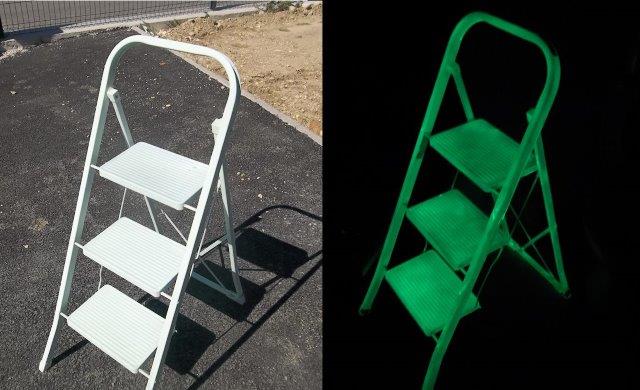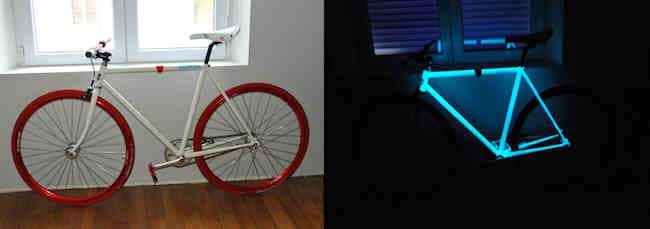 Photo-luminescent varnishes
Photo-luminescent varnishes
A phosphorescent varnish is a varnish that glows at night and is part of a family of very special products called special effect varnishes. These phosphorescent varnishes are therefore luminous in the dark and they owe their extraordinary abilities to the pigments they contain, pigments based on rare earths, composed of Aluminum, Boron, Strontium and Europium.
Let us specify right away that the difference between a varnish and a paint does not at all relate to its degree of transparency, but above all to its brilliance and its quality of protective finish. Indeed, this type of photo-luminescent product is invariably accompanied by the same properties, that is to say that it is 50% transparent, that it has a light color, sometimes greenish, yellowish or beige. We will not obtain, with the "varnish" version, a more transparent and invisible effect (during the day) than the classic "paint" version can offer.
How effective are phosphorescent varnishes ?
The intensity of the luminosity emitted depends on the presence of pigments, these micro-crystals capable of reacting and absorbing the energy of light rays. So logically, the more product and thickness we will apply, by means of repeated layers, the more we will ensure effective photoluminescence, thanks to a greater presence of pigments per square meter. Consequently, whether it is a paint, a varnish or an ink, the more efficiency you have with the pigments, the more transparency you will lose.
The result is the appearance of a slightly greenish semi-opaque veil that will gradually obscure the appearance and color of the base coat. In any case, it is necessary to remember that a phosphorescent varnish should be applied on a white background, whatever it is, and not a background or gray, yellow material, wood or concrete. If you do not respect this rule of white background, you inevitably risk losing a large part of the phosphorescent effect.
 Some technical terms around this topic
Some technical terms around this topic
Remanence is the effective time after the moment of charging. Excitation: this is the charge, the external element that will react and transmit the energy necessary for phosphorescence. Luminance: this is the quantity of light energy that is measured in MCD/M². Finally, phosphorescence is a sort of synonym for photo-luminescence, which designates a phenomenon of slow release of energy (photo) accumulated by a pigment.
How is a phosphorescent varnish refilled ?
It is wrong to say that the longer it is lit, the longer the object painted with a phosphorescent varnish will start to shine. In truth, it has been measured that the exposure time to the excitation load (white light, UV light, sun, neon...) and ideally 15 minutes. Beyond these 15 minutes, no increase in performance is observed. It can be noted that the necessary excitation time can also be much less because the time of 15 minutes was measured with a weak illumination source of only 25 lux. It is estimated that a stronger light (1000 lux for example) would make it possible to load a varnish in barely 5 minutes.



















































































